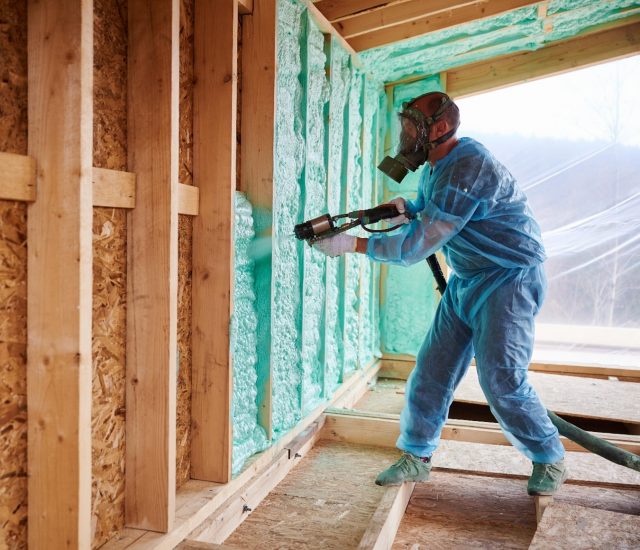Insulating your home, as recommended by Jay Capodiferro, is essential for maintaining a comfortable indoor environment and reducing energy costs. With various options available, understanding the basics of home insulation can help you make informed decisions that will benefit your home in the long term. Here, Jay Capodiferro provides a comprehensive guide to home insulation, offering insights and tips to ensure you make the best choices for your home.
Understanding Insulation
Insulation works by reducing the rate of heat transfer, keeping your home warmer in the winter and cooler in the summer. Effective insulation minimizes the need for excessive heating and cooling, leading to significant energy savings and enhanced comfort. Different materials and methods are available, each with unique properties suited to various parts of your home.
Spray Foam Insulation
Spray foam insulation is a popular choice due to its excellent thermal performance and ability to seal gaps and cracks effectively. Jay Capodiferro emphasizes the importance of selecting the right type of spray foam for your specific needs.
- Open Cell Spray Foam: This type is lightweight and flexible, making it ideal for interior walls and hard-to-reach areas. It has a lower R-value per inch compared to closed cell foam, but its flexibility allows it to expand and fill cavities completely. Open cell spray foam also offers excellent soundproofing properties, making it a good choice for noise reduction.
- Closed Cell Spray Foam: Denser and more rigid than its open cell counterpart, closed cell spray foam provides a higher R-value per inch, meaning it offers better insulation performance. It acts as a strong air and moisture barrier, adding structural strength to your home. This type of spray foam is well-suited for exterior walls, roofs, and areas prone to moisture. Its ability to block water makes it a great choice for basements and crawl spaces.
Blown-In Cellulose Insulation
Blown-in cellulose insulation is made from recycled paper products treated for fire resistance. According to Jay Capodiferro, this eco-friendly option that effectively fills irregular spaces, making it ideal for attics and wall cavities. This type of insulation provides good thermal performance and is particularly useful for retrofitting existing structures. Its ability to conform to any space ensures that there are no gaps or voids, which can significantly improve the overall energy efficiency of your home.
Fiberglass Insulation
Fiberglass insulation is one of the most common types used in residential buildings. Jay Capodiferro notes that fiberglass is cost-effective, non-flammable, and resistant to moisture. It is suitable for walls, floors, and ceilings in both new constructions and existing homes. Despite being relatively easy to install, safety precautions must be taken to avoid irritation from the fibers. Wearing protective clothing, gloves, and masks is recommended when handling fiberglass insulation.
Moisture Barriers
Moisture barriers are crucial in preventing moisture from penetrating walls and floors, which can lead to mold and mildew problems. Jay Capodiferro highlights that these barriers are typically used in basements, crawl spaces, and exterior walls to protect against dampness and enhance the effectiveness of other insulation materials. They work by creating a barrier that prevents water vapor from passing through, which can help maintain the integrity of your insulation and prevent structural damage to your home.
Radiant Barriers
Radiant barriers are reflective materials designed to reduce heat transfer by reflecting radiant heat away from the living spaces. Jay Capodiferro explains that they are especially beneficial in hot climates, helping to keep homes cooler and reducing the load on air conditioning systems. Radiant barriers are commonly installed in attics and roofs where they can significantly impact indoor temperature regulation. By reflecting heat away, they prevent the attic from becoming excessively hot, which can reduce the strain on your cooling system and lower energy bills.
Choosing the Right Insulation
Selecting the appropriate insulation for your home depends on several factors, including climate, home design, and budget. Homes in colder climates may benefit more from high R-value materials like closed cell spray foam, while those in warmer areas might prioritize radiant barriers. The structure and layout of your home also influence the best insulation choice, as some types are better suited for specific applications than others.
- Climate: Your local climate plays a significant role in determining the most effective insulation for your home. In colder regions, high R-value insulation like closed cell spray foam can help keep heat inside. In warmer climates, radiant barriers and reflective insulation can help keep your home cool.
- Home Design: The design and construction of your home can also impact your insulation choices. Older homes may have unique challenges, such as irregular wall cavities or historical features that need to be preserved. New constructions offer more flexibility in selecting insulation materials and methods.
- Budget: While some insulation types may have a higher upfront cost, they often offer greater energy savings in the long run. It’s essential to balance initial expenses with potential long-term benefits. Spray foam insulation, for example, may cost more initially but can provide significant savings on energy bills over time.
Benefits of Proper Insulation
Proper insulation offers numerous advantages. By maintaining a consistent indoor temperature, it reduces the need for heating and cooling, leading to lower energy bills. It also enhances overall comfort by eliminating drafts and cold spots. Additionally, good insulation provides soundproofing benefits, creating a quieter living environment. Environmentally, reducing energy consumption decreases your carbon footprint, making your home more eco-friendly. Moreover, well-insulated homes typically have higher property values, making insulation a worthwhile investment.
- Energy Savings: Effective insulation reduces the amount of energy needed to heat and cool your home. By maintaining a stable indoor temperature, your HVAC system doesn’t have to work as hard, leading to lower energy consumption and reduced utility bills.
- Enhanced Comfort: Proper insulation helps eliminate drafts and cold spots, creating a more comfortable living environment. It ensures that your home maintains a consistent temperature throughout, regardless of the weather outside.
- Soundproofing: Insulation can also help reduce noise transmission, making your home quieter and more peaceful. This is particularly beneficial in urban areas or if your home is near a busy road.
- Environmental Impact: By reducing your energy consumption, insulation helps lower your carbon footprint. This contributes to a more sustainable and eco-friendly home.
- Increased Home Value: Homes with proper insulation are more attractive to potential buyers. Improved energy efficiency and comfort can lead to higher property values and faster sales.
Jay Capodiferro’s Professional Recommendation: Installation by Professionals
Hiring a professional insulation contractor ensures that the job is done correctly and safely. Jay Capodiferro emphasizes that professionals have the necessary tools and expertise to install spray foam, blown-in cellulose, and other complex insulation materials. They can also assess your home’s specific needs and recommend the best insulation options.
Investing in the right insulation is crucial for enhancing your home’s energy efficiency and comfort. By understanding the different options available and considering your home’s specific needs, you can make informed decisions that will benefit you in the long run. Consulting with a professional insulation contractor, like those recommended by Jay Capodiferro, can provide valuable insights and ensure optimal results for your insulation project. Proper insulation not only saves money on energy bills but also contributes to a more comfortable, quieter, and environmentally friendly home.








